
The launch ident was a television station identification used by BBC Two between their launch night in 1964 and the introduction of colour in 1967.

The launch ident was a television station identification used by BBC Two between their launch night in 1964 and the introduction of colour in 1967.
BBC Two is the second BBC channel and the third channel to air in the UK.
On 20 April 1964, BBC2 planned to launch an evening of programmes beginning at 7:20 pm. However, 35 minutes before the new channel went on air, a power failure spread through most of London, affecting BBC Television Centre, where BBC2's programme control was based. BBC1 and BBC News were unaffected as they were still based at Alexandra Palace. The first signs of the new identity were slides containing the BBC2 box logo with the caption 'Will start shortly'. The first night's transmission consisted of this slide interspersed with news bulletins, presented by Gerald Priestland, from the news room at Alexandra Palace, which featured the new logo in the background. At 10 pm, the launch night was abandoned and the programme line-up was aired the following evening. The first programme aired was Play School at 11 am. [1] [2]
Prior to the launch, the channel was represented by two kangaroo mascots, called Hullabaloo and Custard. Hullabaloo, a mother, represented BBC1, while Custard, her joey, represented the new BBC2. Hullabaloo was so called because BBC1 was entertaining and about song and dance, while Custard was named such because, as one person at the BBC stated, "everything goes with custard". [3] [4] [5]
The ident used with the look was a black, white and grey affair. It was an animation that started with grey and black lines flying in from left and right before the white numeral '2' in a black box flies from the top with the BBC logo in the same shade as the bottom line, flies up from the bottom. This animation is accompanied by a trumpeted fanfare, composed by Freddie Phillips, and which was based on the morse code translation of 'B-B-C-2'. [6]
Accompanying this look, static captions of the logo fully formed were used, alongside slides with the day written to the right of the BBC logo. Other slides were used featuring the '2' and BBC logo to the left of the screen with grey and white stripes on the right, which occasionally also featured the days of the week on them. A device used to switch between them was a large numeral 2, which would rotate to reveal one of these slides. [7] These were filmed from the BBC2 NODD room and broadcast live. [8]
The clock face used for this era featured a black background clock with the '2' and BBC logo on the left hand side with a black clock face on the right. Every minute was marked in white, with large Roman numerals every five minute mark. This clock design lasted for a small while, when it was altered to a grey background. [3]
In addition to all of this, BBC2 used in-vision continuity for at least the first few months of its existence, broadcasting the announcer in studio Pres B, Television Centre. The studio featured a desk with BBC2 branding with the day appearing on the wall behind, as well as highlights of the upcoming programmes. This practice was abandoned by BBCs 1 and 2 at about the same time, and the studio vacated. [6]
Promotional and programme slide styles were not uniform at this time and conformed to no specific design. At the time of BBC Two's launch, a number of Testcards were designed to conform to the new 625 line platform. The main one used from BBC2's launch, but dropped with the advent of colour (but continued in regions that still had monochrome until 1976), was Test Card E.
The ident was reused during Afternoon Classics in 2013, on BBC Two, and made its last appearance in December 2016. It was also reused in Northern Ireland during the 90th anniversary of the establishment of BBC Northern Ireland. [ when? ]
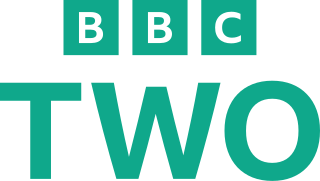
BBC Two is a British free-to-air public broadcast television channel owned and operated by the BBC. It covers a wide range of subject matter, with a remit "to broadcast programmes of depth and substance" in contrast to the more mainstream and popular BBC One.
BBC World Service Television, often abbreviated to WSTV, was the name of two BBC international satellite television channels between 1991 and 1995. It was the BBC's first foray into worldwide television broadcasting. In Europe, it was the successor to BBC TV Europe, which it replaced on 11 March 1991. The service was also launched in Asia as a 24-hour news and information service with minor differences, a precursor to BBC World News, launched on 14 October 1991.

The Noddy was a camera system used for generating idents for the BBC One and BBC Two television channels from late 1963 to February 1985.
The history of BBC television idents begins in the early 1950s when the BBC first displayed a logo between programmes to identify its service. As new technology has become available, these devices have evolved from simple still black and white images to the sophisticated full colour short films seen today. With the arrival of digital services in the United Kingdom, and with them many more new channels, branding is perceived by broadcasters to be much more important, meaning that idents need to stand out from the competition.

The Computer Originated World (COW) was the method of creating the BBC1 symbol that was used between 18 February 1985 and 16 February 1991. It was later used by the international, commercial television service BBC World Service Television from its launch until 26 January 1995.
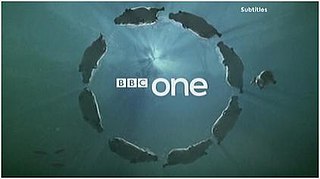
The BBC One "Circle" idents were a set of on-screen channel identities used on BBC One from 7 October 2006 to 4 December 2016. They also featured on the BBC Studios channel, BBC America. The idents contained images of circles being formed by nature, or people and their actions. This was the longest set of idents that was used by BBC One, as they lasted for 10 years.

The BBC Two 1991–2001 idents were broadcast from 16 February 1991 until 19 November 2001, and again from 9 July 2014 until 26 September 2018, on BBC Two in the United Kingdom. The idents, which consisted of a sans-serif '2' in Gill Sans, accompanied by the colour viridian, were created by branding agency Lambie-Nairn, who also created the Channel 4 logo.

The "Virtual Globe" was the method of creating the BBC1 symbol that was used between 16 February 1991 and 4 October 1997.

BBC Select was an overnight television service run by the BBC during the hours when BBC1 or BBC2 had closed down, usually between 2am and 6am. The channel showed programming intended for specialist audiences, such as businessmen, lawyers, nurses and teachers, and was designed to be viewed after broadcast via a video recording. It was funded by a subscription, and most programming was scrambled.
The logo of the BBC has been a brand identity for the corporation and its work since the 1950s in a variety of designs. Until the introduction of a logo in 1958, the corporation had relied on its coat of arms for official documentation and correspondence, although it rarely appeared onscreen. With the increased role of television for the BBC in the 1960s, particularly after the foundation of the ITV network, the corporation used its logo to increase viewer familiarity and to standardise its image and content. The logo has since been redesigned a number of times, most recently in 2021 with the BBC blocks, a logo designed to work across media. From 1958, there have been six different BBC logos. The first logo of the network was used from 1958 to 1963, the second from 1963 to 1971, the third from 1971 to 1992, the fourth from 1988 to 1997, the fifth from 1997 to 2021, while the sixth and current logo was adopted in October 2021.
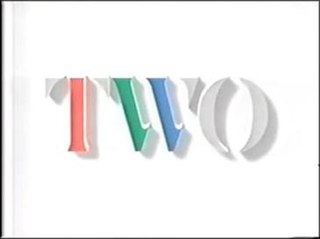
The BBC Two "Two" ident was the station identification used on BBC2 between 30 March 1986 and 16 February 1991. It was the last non-corporate look for the channel, and the only look until 2018 that did not feature a numeral '2' in the design.
BBC Schools, also known as BBC for Schools and Colleges or BBC Education, is the educational programming strand set up by the BBC in 1957, broadcasting a range of educational programmes for children aged 5–16. From launch until June 1983, programming was based on BBC1 during the daytime, apart from coverage of major news events which saw the programmes shifted to BBC2. In September 1983, programming was transferred permanently to BBC2 freeing BBC1 to develop its own daytime schedule. The strand, named Daytime on Two, remained on BBC Two until March 2010, later supplemented by the 'Class TV' strand on CBBC.
BBC One used a number of different idents from the time of the station launch on 2 November 1936 until the station took on the Mirror Globe Idents on 15 November 1969.
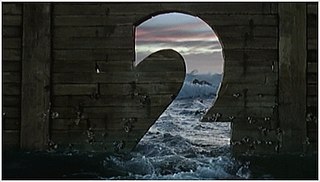
The Window on the World idents were a set of idents used by BBC Two from 18 February 2007 until 13 November 2014. They were created by AMV BBDO and produced by Red Bee Media. The idents featured a number 2 cut out of, or made out of parts of the everyday environment.

The Computer Generated 2 was an ident used by BBC2 between 16 June 1979 and 30 March 1986. It was the first computer generated television station identification in the world.
The Striped 2 was an ident used by BBC2 between 28 December 1974 and 16 June 1979. The ident featured a numeral 2 made out of horizontal lines.
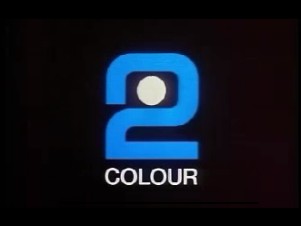
The Cube 2 was an ident used by BBC Two between 2 December 1967 and 28 December 1974. It featured a stylised "2" that rotated on screen.
Throughout the years, Children's BBC, and later CBBC and CBeebies, have used a number of different identities. The branding of the stranded service is distinctive both in the past and at present.
The presentation and the identities of the BBC News channel in the UK alongside its international counterpart and the BBC Parliament coverage channel use specific identities that demonstrate their remit and purpose.
This is a timeline of the broadcasting of schools programmes on television in the UK.